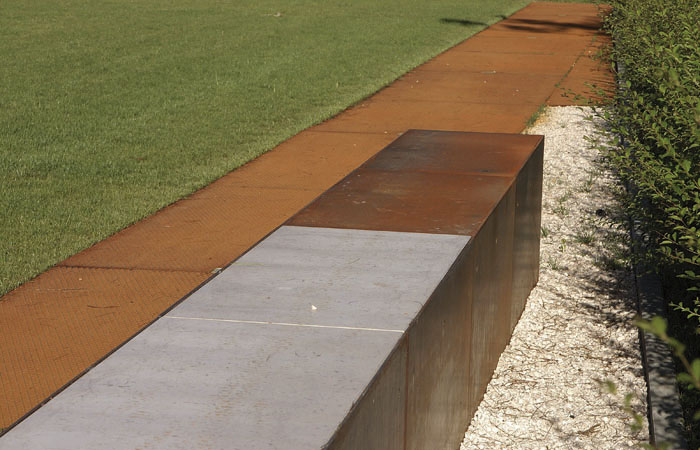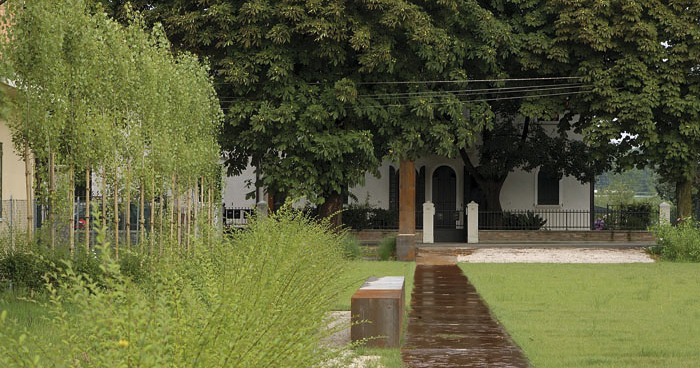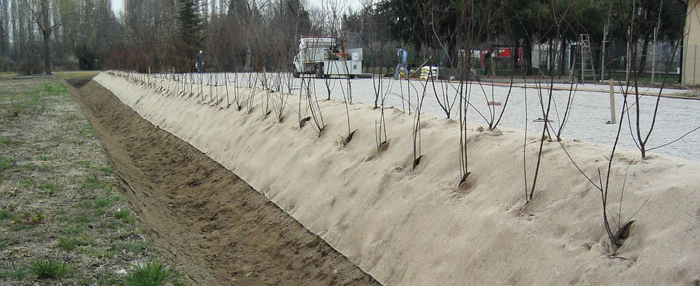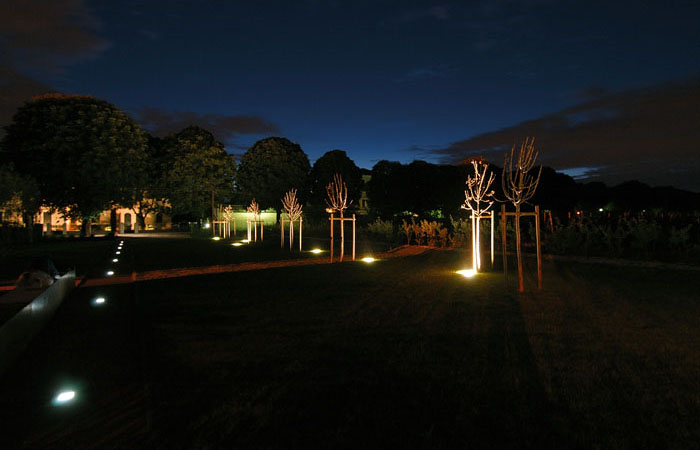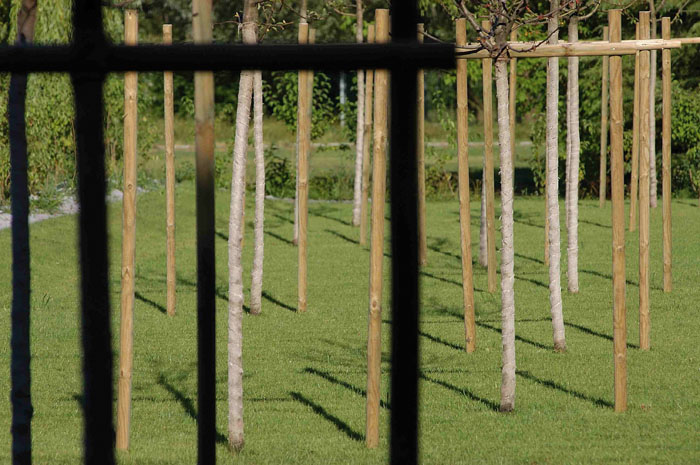The public car park servicing parish church activity and the public area in front of the River Sile becomes an intermediary point between the rural landscape of the fields and that of the more urban one of the historical centre.The frequentation of the area is principally measured by the carrying out of religious functions: this produces an all-full effect (cars densely parked on Sundays) and all-empty (very few cars parked during the week) in a space that has great visibility from the surroundings and is therefore strategic in its relationship with the church and immediate context.
The project strategy interprets the area like a large green basin via two actions:
- making embankments on the sides of the fields with different internal/external slopes that mitigate the visual impact between the rural zone and the car park itself, with a covering of Common Dogwood bush borders (Cornus sanguinea) render the car park a ‘grassed-over’ surface and therefore recognizable in its totality as a grass lawn. Treating the entire space with a grass surface avoids the production of flat, hard, load bearing and waterproof surfaces that tend to alter the soil/water and water/soil balance leading to micro-climatic alterations.
The tree vegetation is composed of Black Polar (Populus nigra italica) arranged in rows along the border with the Parish Centre and European Wild Apple (Malus sylvestris) on the north side arranged ‘casually’ to identify the parking spaces. The car park’s interior pedestrian routing is guaranteed by a dry central pathway, paved with steel sheets covered with non-slip strips forming a sort of carpet of raw material that connects with the meeting point of the paths running perpendicular to the car park that lead towards the church and the activities at the river edge.
